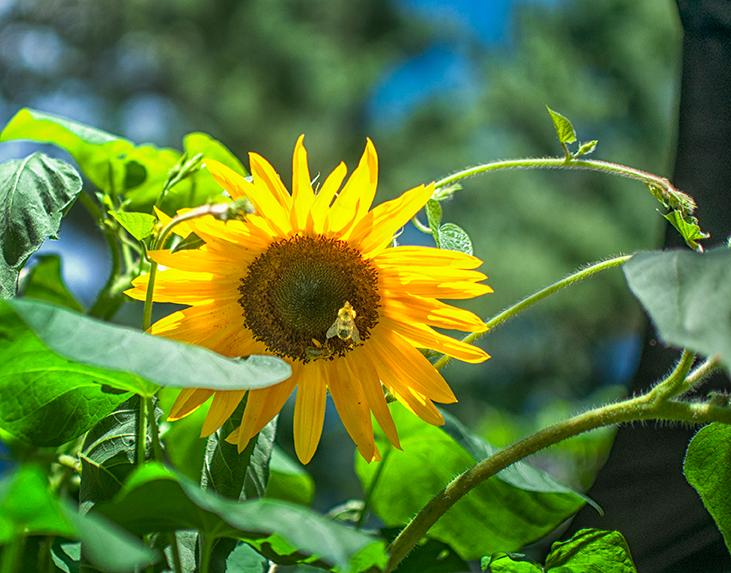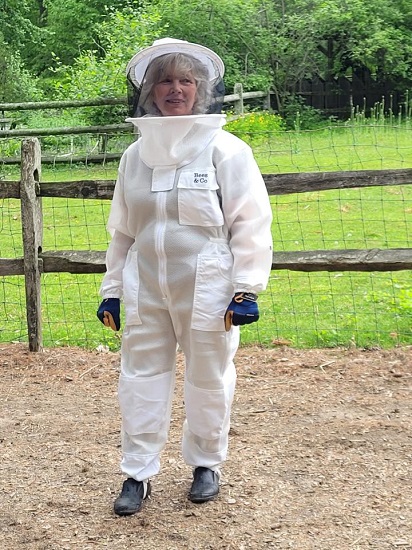All The Buzz at Winslow Farm

Workers, Drones & Queens The Keepers of the Winslow Gardens
Not only is Winslow Farm a sanctuary for a variety of furry, feathered and scaled friends, but it is also a sanctuary for bees.
In the last few years, Winslow Farm has kept two beehives and will soon be expanding.
Worldwide, our bee population is declining, and the loss of those industrious insects will result in disaster for us and our environment, so Winslow Farm is doing its part to nurture its own bee population.

Read on to learn more about the lives of bees.
The Queen
Each hive has one queen. Her only responsibility is to lay eggs. She can live about 5 years, but after two or three years her fertility dwindles.
The Queen can lay up to 2,000 eggs per day. When a hive needs a new queen, they choose a healthy larvae and feed it royal jelly, a very nutritious type of food. A hive without a queen might have worker bees laying eggs, however, they only produce drones so the hive is ultimately doomed.
Worker Bees
The worker bees are all female and are the most numerous type of bee. They have many responsibilities in the hive. Workers tend to the larvae and the queen. They collect the nectar and pollen, transforming the nectar into honey. They produce royal jelly to feed the queen and the larvae, and they are nannies to young bees. Workers defend the hive from intruders. Workers are also the housekeepers of the hive. They keep it free of debris and heat or cool the hive as needed. The worker bees live five to six weeks. The first two weeks of their life is spent with housekeeping tasks and the rest of the time is spent collecting nectar.
Drones
Drones are all male, and their only responsibility is to mate with the queen. Once they mate, they die immediately. Their entire lifespan lasts about 90 days. They feed from the honey cells or beg food from the worker bees. Before winter, they are driven from the hive by the workers.
Bee Biology
The bee’s body is covered with feathery hairs to which pollen sticks as the bee goes from flower to flower. They have a long tongue to lap up nectar from inside the flower. Some of this pollen is transferred to other plants, which in turn fertilizes that plant. The rest is collected into a pollen basket, located on the bee’s legs, and carried back to the hive. There are wax glands on the underside of the bee’s abdomen, which create beeswax, which in turn creates the honeycombs. Bees are not naturally aggressive and will only sting unless threatened. However, once a bee stings, the stinger and venom sac is torn from the abdomen and the bee will die.
Honey
The color of honey depends on the types of flowers from which the nectar is collected. Here locally, the honey in Spring is lighter than the honey collected in Autumn. Locally sourced honey is known to help with seasonally allergies. It is said that honey has antibacterial benefits, helps with digestive problems and can soothe a sore throat.
